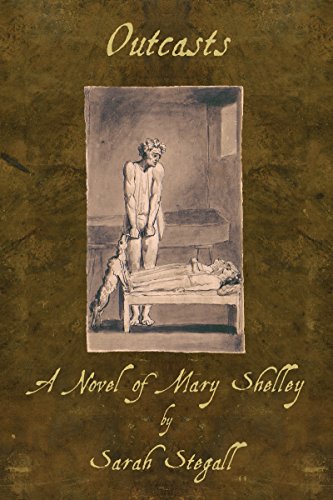Outcasts: A Novel of Mary Shelley
We are given a rare glimpse into the genesis of the first horror story—Frankenstein, or the Modern Prometheus—during three seminal days on Lake Geneva during June 1816. Living by the lake are radical poet Percy Shelley; his 18-year-old second wife, Mary (daughter of philosopher William Godwin) and their infant son, William; poet George, Lord Byron; Mary’s half-sister, Claire Clairmont, who is Byron’s lover; and Dr. John Polidori, who is Byron’s physician. The days are chilly and rainy, filled with philosophical arguments about the nature of man, good and evil, sex and love. The relationships are often strained: Mary, intensely in love with Shelley, and Claire, who is pregnant by Byron and who loves a man perhaps incapable of love; Polidori, a brilliant young doctor philosophically unaligned with the poets, and his sulking patient, Byron, often abusive and immoral; Mary and her estranged philosopher father, William Godwin, regularly demanding money from Shelley and refusing to correspond with her.
Byron dares Mary, Percy and Polidori each to write a ghost story. On the final dark and stormy night, Mary comes to recognize her own independence, her own ability to be and become her own person without the two men most consequential in her life. That is the night that she sits down to write Frankenstein, published anonymously in 1818.
Stegall’s Mary is the voice we hear throughout the novel, extremely young but clearly brilliant and talented—clearly the daughter of Mary Wollstonecraft, the great advocate of women’s rights, yet depending on the men in her life to define her. So intensely written are these days that I could actually hear Lake Geneva lapping at the shore, smell the rain, and hear the thunder. Stegall captures this time in mundane detail while recognizing the historical importance of the relationships and the literary works that found their roots in them. Absolutely wonderful!










